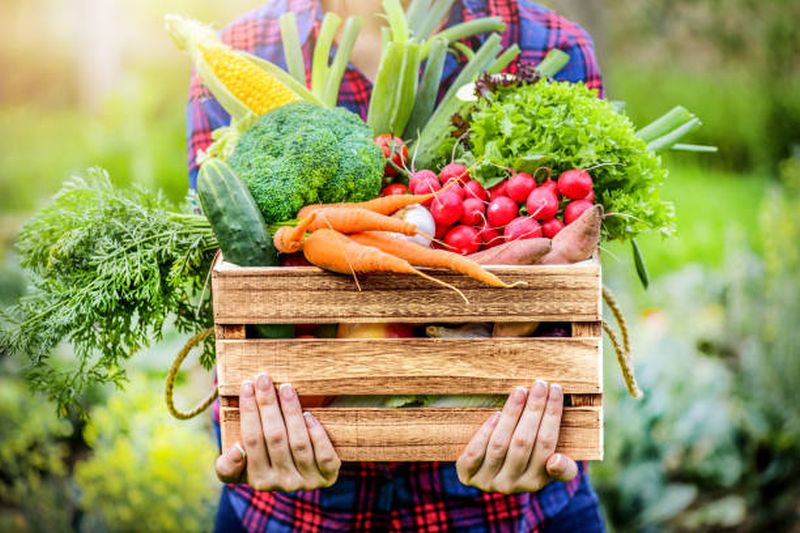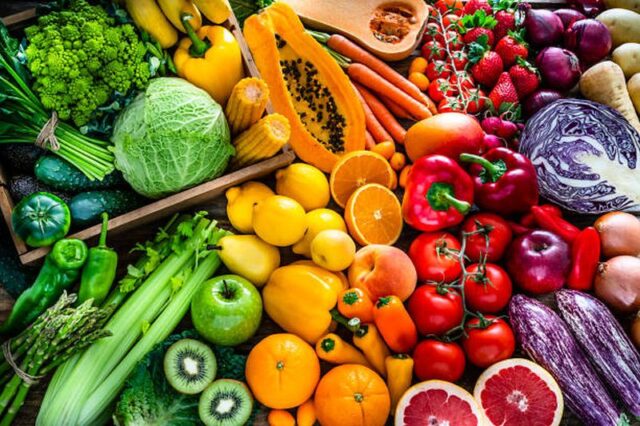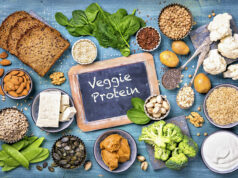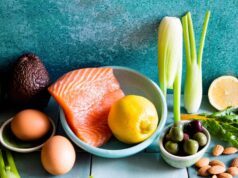Eating healthy is the only way to actually be really and truly healthy. A proper and balanced diet is crucial for the overall well-being of human beings, and yet despite knowing this a lot of people still do not make an effort to do so. Key ingredients in a balanced diet do not really exist. Since it needs to contain a little bit of everything, there are many ways in which it can be made.
However, it can be argued that fresh produce should make the bulk of food for anyone who wants to be and feel healthy. Fresh produce implies fresh fruits and vegetables that we buy from markets and grocery shops and use either in their natural state or in cooking. Consuming fruits and veggies is obligatory for the right intake of so many vitamins, minerals, and nutrients. There is not really a different food group that can be a substitute for it, which is why it is said that we need five portions of fruit or vegetables per day to truly reap all the benefits they have.
The Problem with Fresh Produce

However, there is one big problem with both of them and that is their shelf life. Shelf life is defined as the time something can remain edible and in good condition prior to going bad and spoiled. Fresh produce is infamous for having short shelf life and most people know that it does not really last long. This prevents people from stocking up on it, meaning the trips to the shops need to be more frequent.
This presents further problems because of busy schedules and the inability to restock on time, leading to other, unhealthier options becoming more and more present on the menu. If we are to eat more fruits and vegetables, we have to know how long it can last. With this in mind we decided to bring you this article and talk about the expected shelf life of the most popular fruits and veggies. Keep reading to find more so that you can better plan out your trips to the grocery shop. Better yet, have it ordered in advance when you start running out. Learn more about shopping for fresh produce by checking out fruit and vegetable delivery office.
Apples

Perhaps the most famous fruit, apples are quite durable and resistant provided that they are not physically damaged. They can survive anywhere from 4 to 8 weeks in the fridge, but most people do not keep them in the fridge.
This is because apples can generally remain in their edible state for a week or two outside of the fridge too. Brown spots can be cut away before eating so do not worry if your apples develop them, but wrinkled and mushy apples should be tossed.
Avocados
Avocados are one of those fruits that are difficult to figure out when it comes to the right time to eat them. They are best when fully ripe and softer to the touch than hard. They can last for 4 to 7 days on room temperature, but the state in which you buy them also matters.
The flesh should be soft and easy to mash. That is when it is the best both for eating and for making guacamole. The skin underneath the stem should be green and that is the best way to check it.
Bananas

Ah yes, bananas. Turn away at the wrong time and they go completely brown! Joking aside, bananas are infamous for going bad very quickly. They can only survive for a few days at room temperatures. Ripe bananas are completely yellow with only a few brown spots.
These are the easiest to peel and they taste the best. This usually happens between 2 and 5 days at room temperature. Do not keep bananas in the fridge and separate the new bulk from the one you already have at home. They turn faster when exposed to older bananas!
Oranges and Lemons
Some people store them in the fridge, others do not. It does not really matter for citrus fruits because they can last for a few weeks both at room temps and in the fridge. Soft spots and wrinkles are clear signs of them going bad so use them while they are bright and firm.
Carrots

Let us talk about veggies for a bit. Carrots are good for 3 to 4 weeks in the fridge and are only past their edible prime when they are limp, or when they start turning white and grainy. If there are greens on them when you buy them, cut them off and store them separately.
Cucumbers
The versatile cucumber can last you but a single week in the fridge and is one of the weaker salad veggies out there. Sunken areas, wrinkly skin, and yellow spots are clear indication that it has started to turn. These cause bitter taste and dry flesh, so discard of a cucumber if it ever appears like this.
Garlic

Storing garlic is easy because it can last for months at room temperatures. Actually, it is good for anywhere between 3 and 6 months. As long as it is off-white and firm, it is good to eat. Tan and wrinkly garlic should not be eaten. Store it in cold and dark places to maximize its shelf life.
Tomatoes
Tomatoes are similar to cucumbers in terms of durability. However, they can survive for a whole week outside the fridge, at room temperature. They are still best kept inside the fridge where they can last for much longer. Heavier and firmer tomatoes are the best for eating. They can be preserved for a few extra days when cut wrapped in cling foil if you do not need the entire tomato.
- Blueberries – between 1 to 2 weeks in the fridge
- Broccoli – between 7 to 14 weeks in the fridge
- Iceberg and lettuce – between 7 and 10 days in the fridge
- Onions – between 2 and 3 months at room temperature
- Peaches – between 1 and 2 days at room temperatures (arguably the least durable fresh produce)
- Strawberries – between 2 and 7 days in the fridge (a close second)
- Watermelons, melons, honeydews – between 7 and 10 days at room temperatures, a few more days in the fridge when cut
- Zucchini – between 5 and 7 days in the fridge




